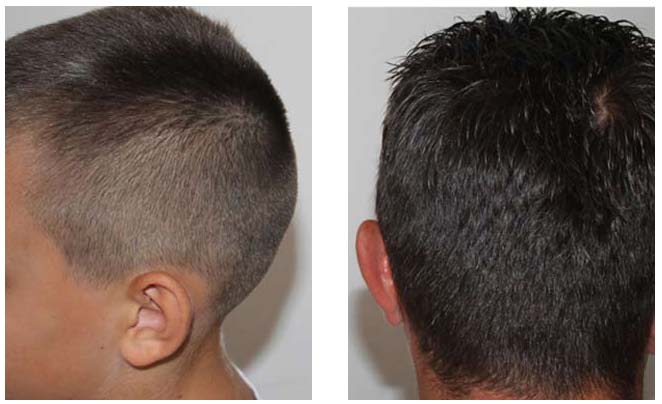Familial poliosis

Downloads
DOI:
https://doi.org/10.26326/2281-9649.27.3.1466How to Cite
Abstract
The prevalence of halo nevus in the normal population is about 1% (3). In a Pediatric Dermatology clinic the incidence was 0.1% (1) because in the first five years, which account for 60% of children visited, halo nevus is rare.
Halo nevus in our pediatric population (up to 16 years) prevailed in the male, while there was no gender difference in vitiligo, both segmental and non-segmental. The average age of onset of halo nevus in our pediatric population was 10 years, 9 years in halo nevus associated with vitiligo, while the average age of onset of vitiligo is 8.1 year.
Halo nevus was found in all the different forms of vitiligo, in our case series in 15% of cases. However, in 9 out of 10 cases it appeared with vitiligo at the same time, only in 1 case out of 10 one year or more before. 60% of halo nevi we diagnosed were not associated with vitiligo: in all these cases we informed their parents about the possible appearance in the future of vitiligo. Isolated halo nevi were followed by vitiligo in 5% of cases in the 5 and half years following the diagnosis (2). In halo nevus the personal history of other autoimmune diseases was positive in 1.5% of our cases unlike non-segmental vitiligo where the positivity was 7%; the autoimmune history in 1st degree relatives with halo nevus was positive in 40% of cases, but this percentage is not significantly different from that of a dermatological control group (2).
